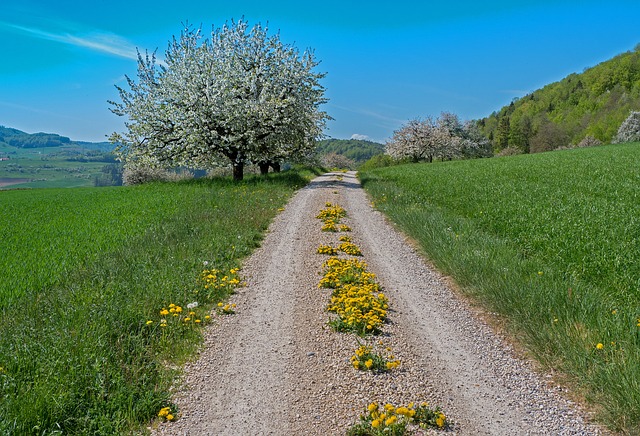Top Tips for Spring Hikes in 2021

Top Tips to Prepare for Spring Hikes This Year
After being cooped up all winter, hikers cannot wait for spring to come so they can explore new trails. Spring is when nature starts to shake off the winter doldrums and starts coming alive once again. But the weather can still be a little wacky with beautiful marble skies and the possibility of sudden bursts of rain or snow.
That is why it is essential for hikers to revive their hiking safety standards and equipment, and to prepare for the unique weather conditions. Hiking conditions can be unpredictable since most of the trails would have been buried under a few feet of snow or covered with leaves, branches, and mud during the cooler months. We hope these tips come in handy while planning your spring hiking adventures.
Check the Weather
Weather is probably the most crucial consideration you have before deciding on your spring hike destination. Also, the weather might be pleasant when you start, but it can change dramatically within a few hours. You should always check reliable weather websites or apps before you plan to start your trip and frequently during your outing. You can check the weather forecast on the National Weather Services webpage to obtain climatic details for hiking destinations. Alternatively, you can use ClimaCell’s website or application. We recommend ClimaCell because it can tell you the most suitable time in the day for hiking at a particular destination.
ClimaCell’s forecast will also give you micro-location-based weather updates that can help you prepare adequately. The weather details are necessary to gauge what gears you need to pack, which brings us to the next section of this article.
Getting Prepared
Many hikers tend to forget essential things in their backpacks in the spring because they are out of the hiking habit. That is why you should make a list of essentials, so you do not have to rely on your memory. Always carry some extra clothes during a spring hike, and make sure that your clothes are made with moisture repelling and quick dry fabric.
Never wear cotton or denim on a hike during spring as they tend to get wet easily and can take hours to dry. Carry a rain jacket no matter what the weather forecast says, and always bring extra pairs of socks. You can also consider taking gaiters because they are quite useful to keep your legs dry and clean during a spring hike.
Always carry a GPS locator as well as a compass as it is easy to lose a trail due to mud or snow on the ground. You should also bring a first-aid kit, adequate food, and ample amount of water.
Choose Your Destination Carefully
One of the most important aspects that you need to consider before choosing a hiking destination is the absence of snow or ice. Many mountain hiking trails can have snow on the ground until July, so you are most likely to run into some while hiking in spring.
Make sure that you choose your destination carefully and prepare your gear accordingly. You should also refresh your knowledge of safety tips for avalanches in late winter before you head out on your hike. Many national park and trail authorities publish hiker’s reports that describe the conditions for specific trails. You can check these reports before finalizing your hiking destination so you know what kind of conditions you may have to encounter. You can also consider writing one once you are back from the hike so that others can make use of it.
Also, contact the closest ranger station and speak to a ranger for information and advice about the places you want to visit, the trails you will be on, and how long you expect to be hiking. Some websites offer hiking trail suggestions and suitability for every season to help hikers choose their destinations.
Know the Hazards
Here are some of the hazards you can encounter while hiking in the spring. We have also included some suggestions on how you can handle them.
- Snow can be slick in the early morning because it could have frozen overnight. If it is soft, you can encounter post-holing where your feet, legs, or entire lower body sinks into the snow.
- Snow can also obliterate trails, trigger avalanches, or a cornice can collapse. So if you want to push through the snow in the spring, make sure that you study a list of travel tips published by experienced hikers or authorities. You should also bring snowshoes or fittings to increase the traction on your boots.
- You may have to encounter rain and streams while hiking in the spring. So make sure that you carry the necessary gear to stay dry. As we mentioned before, bring extra clothes, extra socks, raincoats, gaiters, and moisture repelling outfits. You can also watch a few videos to learn how to cross rivers or streams, as that could be more challenging and dangerous in the spring.
- Mud and fallen trees cause a lot of problems for spring hikers every year. Trail maintenance crews and volunteers try to fix these issues as soon as they can. However, if you come across a sticky spot, see if you can power through it without skirting it.
- If you try to go around the problematic area, you may cause damage to the fragile meadows or create confusion for other hikers. Make sure you observe all safety measures while trying to slog through the mud or going over/under a fallen tree.
Spring hiking can be an exhilarating experience, especially if you have been cooped up all winter in your house. However, you may face a series of challenges, so you must be prepared for them. We hope that these steps prove helpful for your spring or summer hike this year.




